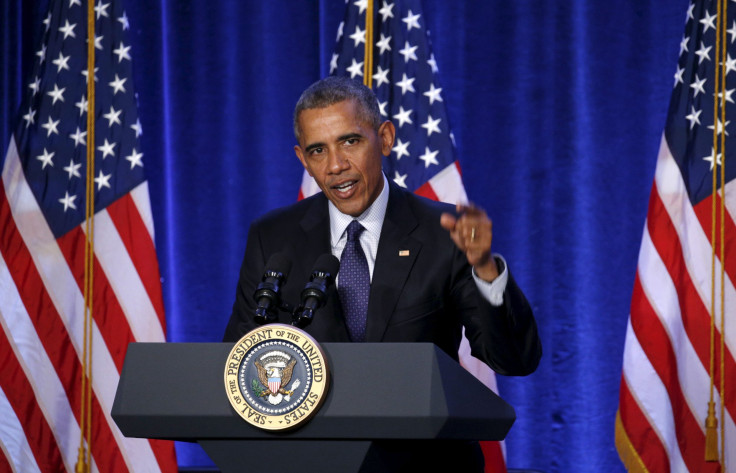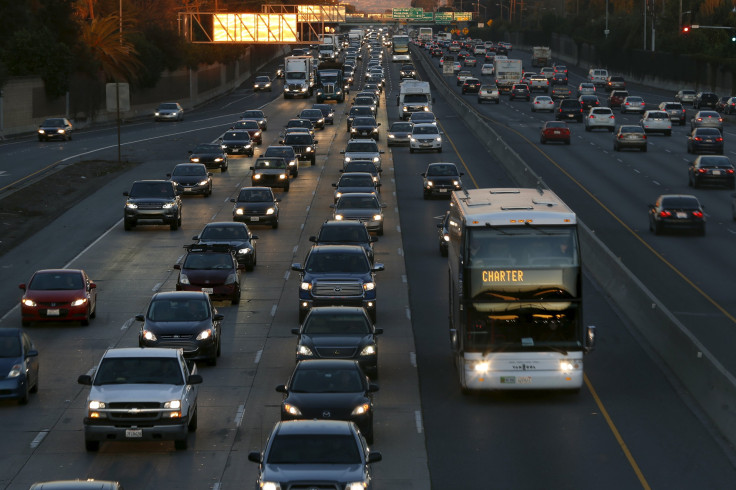Obama To Propose $10-A-Barrel Tax On Oil To Fund Clean Energy Projects

President Barack Obama has a plan to fund the U.S. transition to clean energy: Tax the oil companies. Obama is expected to propose a $10-a-barrel fee on oil in his budget plan next week to help pay for lower-carbon transportation projects, the White House said Thursday.
The president’s budget request will include more than $300 billion worth of investments in the next decade to pay for mass transit projects, high-speed rail lines, self-driving cars and other alternatives to the gas-guzzling vehicles most U.S. drivers need to get around, the White House said in a fact sheet.
The plan will call for charging oil companies a $10 surcharge for every barrel of oil produced, a fee that presumably will trickle down to consumers at the gas pump. The goal is gradually to make it easier for Americans to commute to work and travel between cities without driving alone in their carbon-emitting cars.

“Our nation’s transportation system was built around President Eisenhower’s vision of interstate highways connecting 20th century America,” the White House said. “That vision enabled economic expansion and prosperity. … But what remains today of that system is not ready to meet the challenges of a growing 21st century economy.”
News of the proposal arrives as U.S. consumers are paying the lowest prices for gasoline in a decade. With crude oil prices down about 70 percent since their mid-2014 peak, the price of gas has plunged to $1.76 a gallon on average Thursday, down 34.6 cents from last year's average, according to GasBuddy.com.
Obama’s proposal would be his latest in a series of efforts to reduce greenhouse gas emissions and elevate the United States as a global leader in the fight against climate change. So far, however, many of his actions have targeted the U.S. power sector, the largest single-source of America’s carbon pollution. The landmark Clean Power Plan, finalized last year, will require states to reduce power plant emissions to 32 percent below 2005 levels by 2030 — a policy expected to reduce U.S. consumption of coal power and boost investment in solar and wind power and energy efficiency.
The U.S. electricity sector accounted for 31 percent of the country’s total greenhouse gas emissions in 2013, the Environmental Protection Agency estimated. Transportation accounted for about 27 percent of emissions.

The Obama administration has targeted tailpipe emissions and sought to encourage more drivers to trade their gasoline-powered engines for electric vehicles or hydrogen fuel cell models. The Corporate Average Fuel Economy standards, strengthened under Obama, now require large automakers to boost fuel efficiency to 54.5 miles per gallons by 2025. In his 2009 economic stimulus deal, Obama set aside $24 billion from the $787 billion package to boost advanced vehicle and battery manufacturing and to develop high-speed rail and other trains.
Obama aides speaking with Politico acknowledged the president’s plan has no real shot of surviving the Republican-controlled Congress — especially in an election year.
“We’re realistic about the near-term prospects in Congress,” an aide told Politico, “but we think this can change the debate.”
Obama’s 21st Century Clean Transportation Plan would include:
- $20 billion in additional spending per year to reduce traffic; expand transit systems in cities, suburbs and rural areas, develop high-speed rail lines across major regional corridors to reduce air travel, modernize the U.S. freight system and invest in new rail technologies such as magnetic levitation, or maglev, which allows vehicles to travel without touching the ground.
- $10 billion per year to help states and local governments develop smarter regional transportation plans, including by investing in electric car chargers or hydrogen fuel stations, boosting use of public transportation and making it easier to move around by bike or on foot.
- More than $2 billion per year to launch pilot programs of self-driving cars and increase research and development in “smart, clean vehicles and aircraft.”
© Copyright IBTimes 2024. All rights reserved.





















